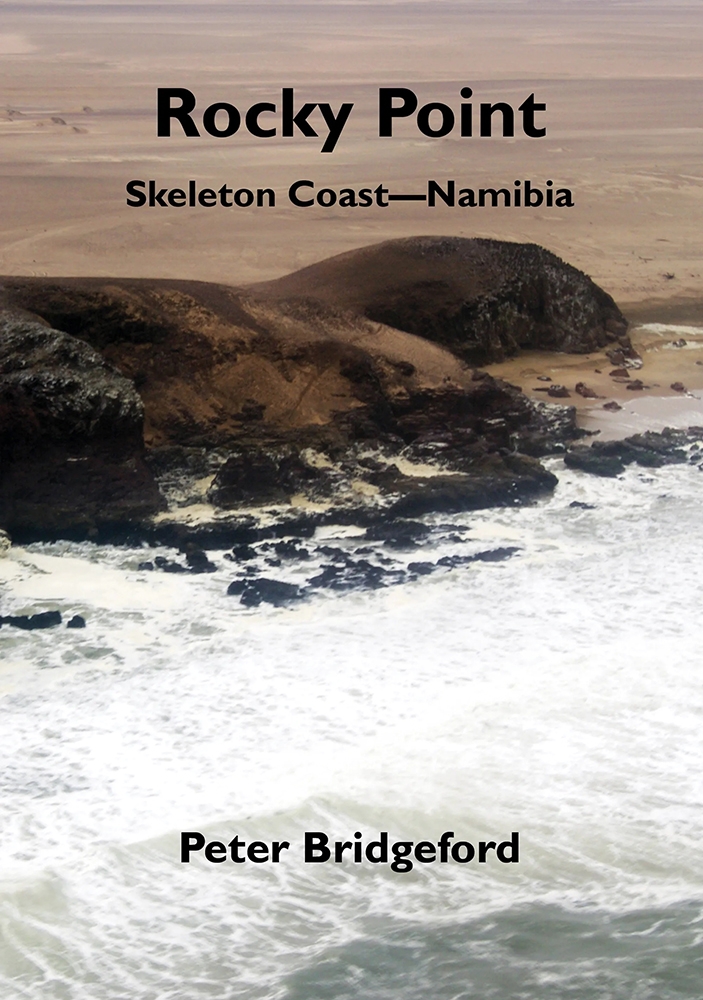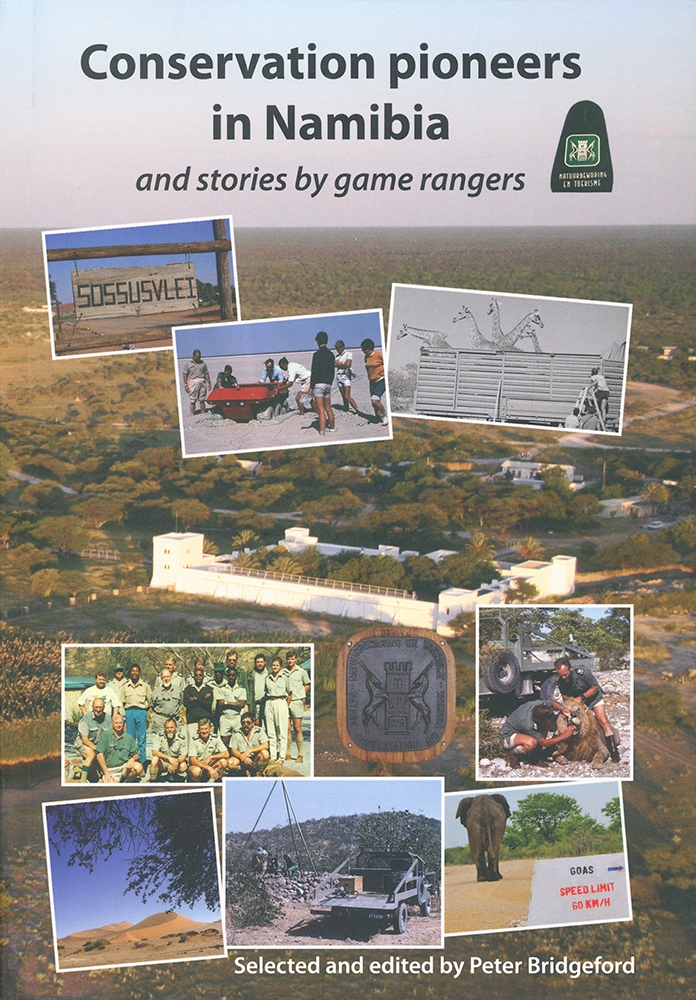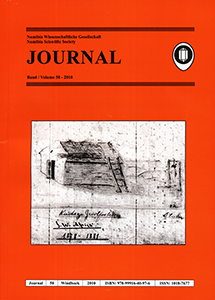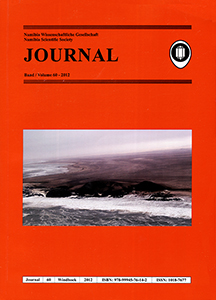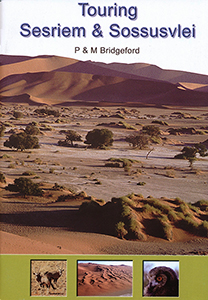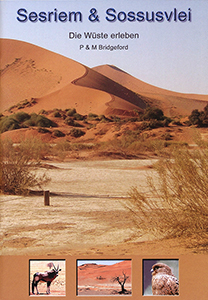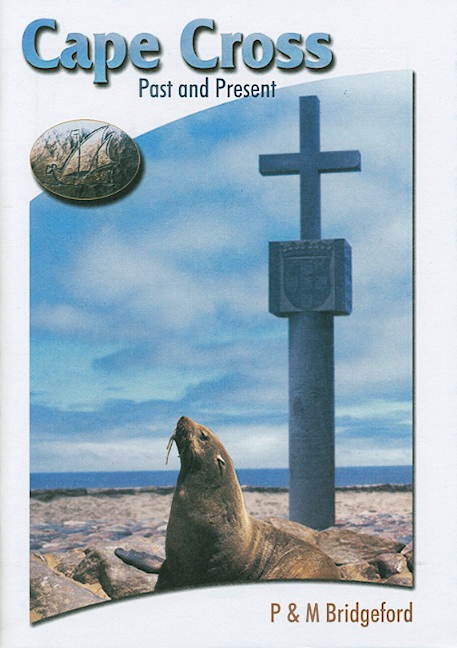Rocky Point. Skeleton Coast - Namibia, by Peter Bridgeford
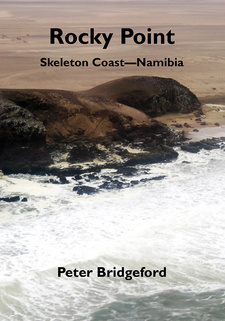
Rocky Point. Skeleton Coast—Namibia, by Peter Bridgeford. Namibia Scientific Society - Kuiseb Publishers. Windhoek, Namibia 2022. ISBN 9789994576807 / ISBN 978-99945-76-80-7
Rocky Point. Skeleton Coast - Namibia, by Peter Bridgeford. Rocky Point on the Skeleton Coast of Namibia is a small rock outcrop on the otherwise flat and featureless sandy coast.
[...] It has a small bay north of it, but as the Africa Pilot advises, there is no landing place. Despite this, the mere fact that it is the most prominent landmark on the sandy coast between the rocky headland of Mowe Bay and the Kunene River 250 km northwards, has made it an important landmark during the past two hundred years. Rocky Point's inaccessibility kept most people from reaching it from overland, and the sea route and lack of a safe landing spot kept out many other explorers. Then, for the last hundred years, authorities have had restricted access, adding to the mystique of this isolated rock outcrop on the Namib Desert coast. For serious anglers, it is Utopia and for those lucky enough to have fished in its rich waters, it is a badge of distinction. Hundreds of people passed or visited Rocky Point over the years. Some played a major role in the history of this intriguing desert landmark. For many travellers, it was the destination, for others merely a stop on the difficult and sometimes dangerous journey along the treacherous Skeleton Coast. A few unfortunate visitors lie buried in marked graves, while the sun-bleached bones of others lie scattered by wind and wild animals, and some still lie hidden beneath the shifting sands. Before the first documented travellers came by boat, indigenous inhabitants of the surrounding desert sporadically visited this prominent landmark. With colonization came explorers, hunters, traders, geologists, civil servants and soldiers. They arrived in boats, on foot and by horse. A handful arrived in the effortless luxury of an aircraft. The first motor vehicles battled soft sand and treacherous saltpans. Before the advent of the modern four-wheel-drive vehicle, Rocky Point was difficult to reach. Even today, the ill equipped or unwary can meet with disaster. The events chronicled here are only a fraction of the many adventures of hunger, thirst, despair, death, heroism, sacrifice and also joy, wonder and excitement on this wind-swept desert of the Skeleton Coast of Namibia. The Namibia Scientific Society first published some of these events in their Journal, Vol. 60, in 2012.9
Early exploration of Rocky Point
1486 Portuguese Explorers: In January 1486, Diogo Cao was the first known European explorer to reach the coast of the present-day Namibia. Early maps indicate a Praia Verde (Green Beach), which refers to the reed-beds at the Kunene River mouth. No mention is made of Rocky Point, and the next discernible landmark is possibly the Hoanib River mouth. Cao probably made a seaward tack because of the headwinds and missed both Rocky Point and, a few kilometres further south, the Hoarusib River. Portuguese mariners named this stretch of coast the Mar Tenebroso, the dark and gloomy sea.
1824 Royal Navy: In 1824, HMS Espiegle, under command of Captain Isham Fleming Chapman, surveyed the west coast between Angra Pequena (now Liideritz) and the southern part of Angola. On 28 February 1824, they investigated a large river that he named Nourse's River in honour of Commodore Nourse, the naval commander in the Cape. Today, this is the Kunene River. "The master went into the river in the black gig and found the water perfectly good close inside. They filled their barrels with 32,400 litres of water. A party ascended Nourse's River for several kilometres and saw large trees, elephants and hippopotamuses. The few surviving documents from this voyage do not mention Rocky Point, but it is unlikely they would have missed such a prominent landmark. [...]
This is an excerpt from Rocky Point. Skeleton Coast - Namibia, by Peter Bridgeford.
Title: Rocky Point
Subtitle: Skeleton Coast - Namibia
Author: Peter Bridgeford
Publisher: Namibia Scientific Society - Kuiseb Publishers
Windhoek, Namibia 2022
ISBN 9789994576807 / ISBN 978-99945-76-80-7
Softcover, 15 x 21 cm, 140 pages, numerous b/w and colour photos
Bridgeford, Peter im Namibiana-Buchangebot
Rocky Point. Skeleton Coast - Namibia
The history of Rocky Point, a small, isolated rock outcrop on the Skeleton Coast of Namibia.
Conservation Pioneers in Namibia
Conservation Pioneers in Namibia and stories by game rangers: a compelling and insightful read.
Journal 58-2010 (Namibia Scientific Society)
A scientific series published by the Namibia Scientific Society, this is the Journal Nr. 58 from 2010.
Journal 60-2012 (Namibia Wissenschaftliche Gesellschaft / Namibia Scientific Society)
Dies ist Band 60 des Journals der Namibia Wissenschaftliche Gesellschaft (Namibia Scientific Society), der 2012 herausgegeben wurde und bereits vergriffen ist.
Touring Sesriem and Sossusvlei
A guide to plants and animals of the Namib area of Sesriem and Sossusvlei, its history, geology, ecology and touring routes.
Sesriem und Sossusvlei. Die Wüste erleben
Ein landeskundlicher Blick auf die Geschichte, Geologie und Ökologie der Wüste Namib im Bereich von Sesriem und Sossusvlei.
Cape Cross. Past and present
The fascinating past and present of Cape Cross in Namibia over the past 500 years.

